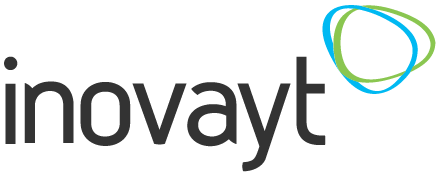
As a business owner, you might wonder, ‘What is asset finance?’ and how your business can best benefit from it. There are plenty of different options, each with its own differences, that can help your business.
In this blog, we will unpack asset finance and the different types of products available to you.
What is asset finance?
Asset finance is a branch of lending that helps your business grow. Many companies remain stagnant as they know what they need to grow but not the funds required to purchase essential items upfront. With asset finance, your business can possess an item – such as a new piece of equipment, vehicle, etc. – while making required payments over a set period.
Growing and scaling your business is stressful – especially with an unpredictable cash flow. With finances often stretched, purchasing what you need to expand is difficult, which is where asset finance comes in.
Why use asset finance?
There are many reasons for using asset finance. Some of the main ones include the following.
Securing the use of assets
Purchasing assets outright puts a strain on a business’s working capital and cash flow. By using asset finance, your business can access these otherwise out-of-reach items while maintaining financial flexibility and the opportunity to allocate funds elsewhere.
Lenders and borrowers both benefit from asset finance. For the lender, it is a much more secure option than a traditional loan, which requires a large sum of money the bank hopes they will retrieve. By lending out an asset, a lender knows they can recover (at a minimum) the value of the asset’s worth. Lenders can also seize the asset if they fail to make repayments.
For borrowers, the benefit is that they gain access to their equipment sooner, can better manage cash flow and allocate funds and choose an asset finance structure that works best for them.
Securing a loan through assets
Asset financing also involves businesses looking to secure assets by using the item they’re financing as collateral. By doing so, lenders can seize the asset if the company defaults on their loan. This is commonly used for short-term funding to increase cash flow and working capital.
Businesses love these loans as they are often quicker and easier to acquire. They also have fewer restraints and offer greater flexibility.
Types of asset financing
There are a few main types of asset finance that the expert team at Inovayt can assist with. These include the following.
Hire purchase
Under a hire purchase, a business leases an asset from a provider who purchases the asset and agrees to lease it to the business. During the life of the lease, the provider owns the asset and is responsible for repairs, maintenance and insurance. As a hire purchase works like a rent-to-own agreement, ownership of the asset is not transferred until the end of the hire period. This gives the vendor more protection than other leasing methods for unsecured items, as the items can be repossessed if the borrower can’t keep up to date with repayments.
Equipment leasing
Equipment leasing can be broken into two categories: operating and finance. A finance lease is where the asset provider purchases an asset with an agreement with your business to lease the asset over a set period. Like a hire purchase agreement, the leaser will service expenses like maintenance and insurance, with the opportunity to own the asset afterwards. In an operating lease, the ownership remains with the entity that leased the asset to a business or individual.
You may be able to claim input tax credits for rental and other charges that are subject to GST with a finance lease.

Novated lease
Novated leases are essentially three-way agreements that can be used for those looking to finance a new or used vehicle. Repayments can be made from your pre-tax salary (with approval from your employer) under a salary sacrifice arrangement. This allows you to effectively reduce your taxable income while letting you bundle your vehicle’s expenses into one easy payment.
Chattel mortgage
A chattel mortgage is when the purchased asset is used as the collateral for a loan. Unlike a mortgage on traditional property, a chattel mortgage is for moveable property like vehicles and factory machinery.
If the borrower doesn’t make the required payments, the lender can seize and liquidate the asset.
Low doc loan
The only difference between a standard doc commercial product and a low doc or self-declaration loan is the criteria businesses must meet. This criteria varies between lenders but generally revolves around the length of the ABN and GST registration and property ownership.
Low doc loans are great for strong, established businesses that want their loans fast-tracked by lenders.
Sale and buyback
This type of equipment finance is where a loan is raised (through lease, chattel mortgage, or hire purchase) against an asset owned outright and free from any encumbrance.
This frees up cash for the business in the short term and allows continued use of the asset to avoid hindering the business.
Secured vs. unsecured loans in asset finance
Regarding security in asset finance, there are two types of loans – secured and unsecured. As the name suggests, a secured loan is a loan where the asset financed is tied to the loan as collateral. Secured loans often come with better terms and lower interest rates than unsecured loans, as the lender has your asset as collateral.
Unsecured loans are also referred to as personal loans. They aren’t secured to anything, making them a riskier option for lenders should the borrower default on their payments. Lenders base unsecured loans solely on your creditworthiness, so terms will be less favourable than secured loans.
Benefits of asset finance
Asset finance can be a game-changer for businesses. Some of the key benefits include:
- Maintaining your cash flow
- Minimising upfront costs
- Capital allocation
- Tax incentives
- Instant asset write-off
- No additional collateral is required
To learn more, read our blog on The Benefits of Asset Finance.
If you’re ready to grow your business or are looking for advice on your next financial move, the expert team of asset finance brokers at Inovayt has you covered in understanding "what is asset finance?". With tailor-made solutions to your business, contact us today to discuss your asset finance needs.






